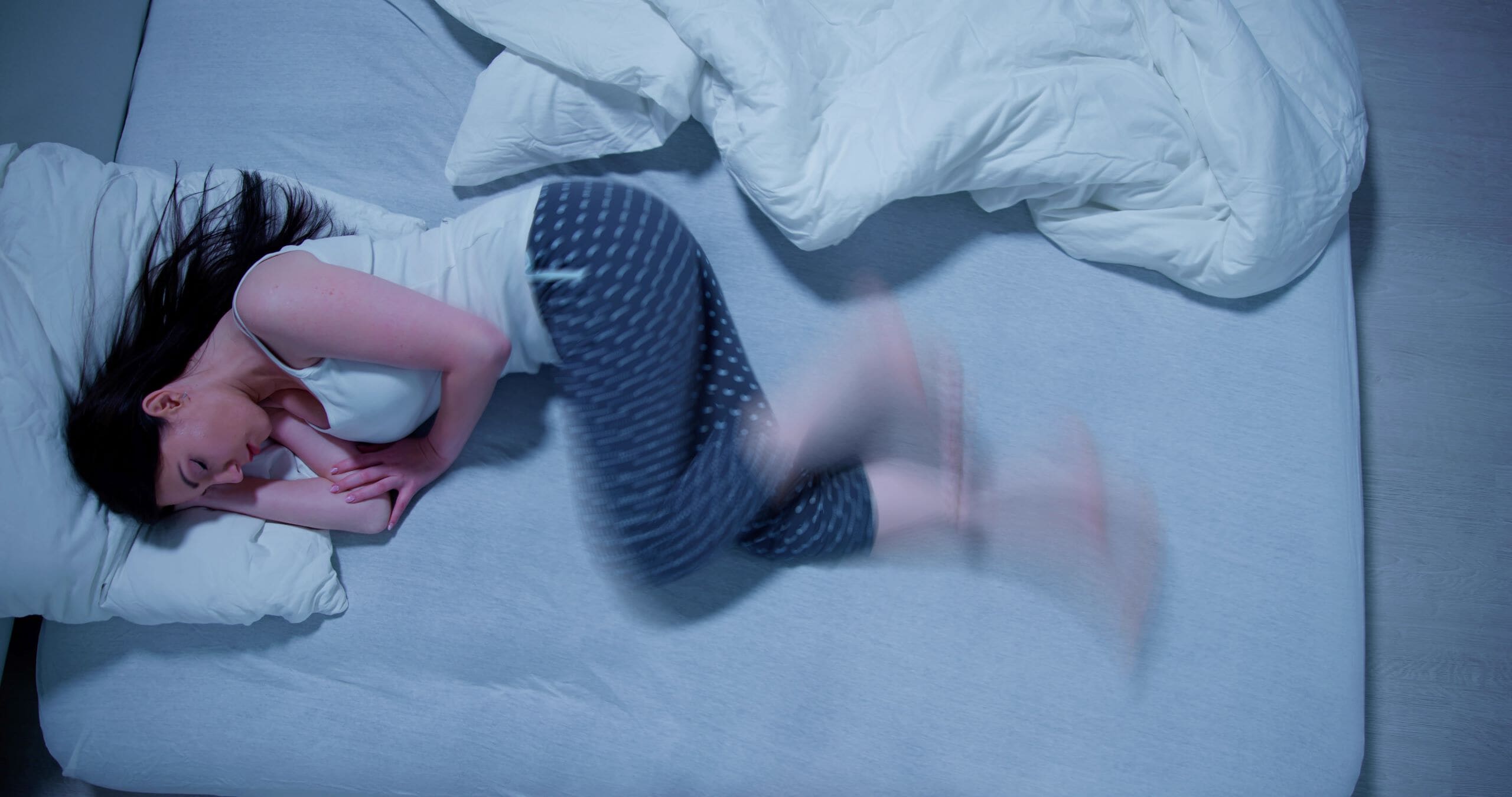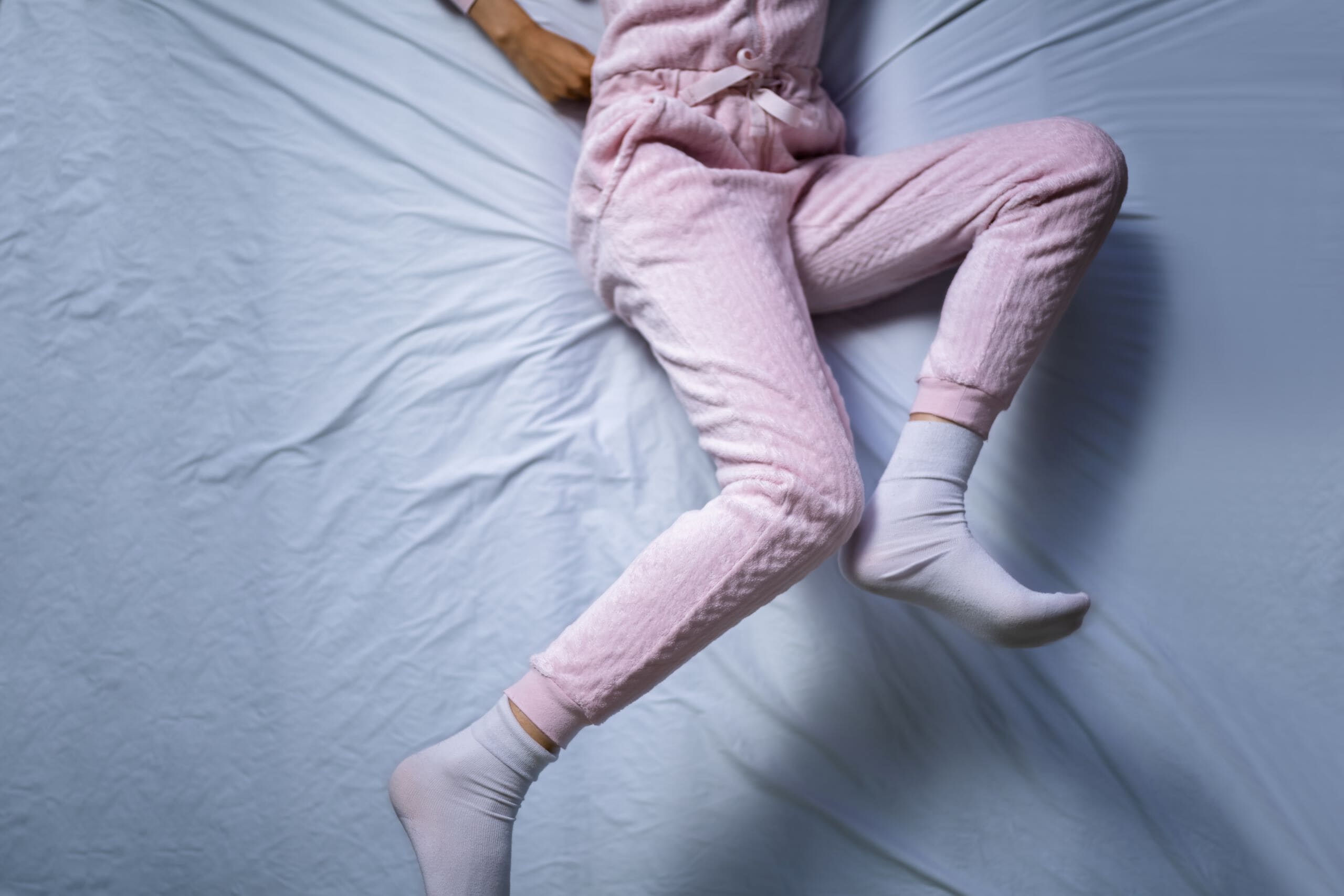If you’ve ever had one of those days where you've been craving your bed since the moment you got out of it, then you know that there’s no better feeling than hitting the hay and getting some well-earned rest beneath comfortable sheets – at least until your legs start to ache.
Whether it’s a subtle twitch or a growing urge to shake them, few things are more likely to disturb your rest and prevent you from getting to sleep than a sudden bout of energy in your legs that makes you want to stretch and move them until it goes away.
But what causes restless legs in bed, and is there anything you can do to stop this sensation from disrupting your sleep pattern – especially if you’ve already had a long and exhausting day of work?
Keep reading to find out everything you need to know about the science behind restless leg syndrome, including the known causes behind it, and the various tips and tricks you can try to minimise a sudden kick waking you up in the middle of the night.

What is restless leg syndrome?
For most people, restless leg syndrome manifests itself as a strong urge to move their legs, particularly when at rest or just before they go to sleep. In many cases, this feeling can be so strong that not moving their legs becomes impossible, with the discomfort lasting for several minutes or more, depending on the severity of the sensation.
As a result of these feelings, many people who suffer from restless leg syndrome report that they’re unable to get to sleep due to the sensations in their legs, or that they wake themselves or their partner up in the night through sudden twitches of their legs that they have no control over.
What causes restless legs in bed?
While restless leg syndrome is one of the most common sleep disorders – most people will probably experience it at some point in their life – scientists are still unsure of the root cause of the condition, though many suspect that it’s related to a brain, nerve, or sleep condition, as well as over stimulation of your leg muscles.
However, what is agreed upon is that a variety of external and internal factors can increase the likelihood of a restless leg episode occurring including, but not limited to, the following:
- Genetics
- An iron deficiency
- Medication side-effects
- Substance abuse
- Underlying medical conditions
- Pregnancy
- Excessive caffeine consumption
- Excessive alcohol consumption
In most cases, if you do experience restless leg syndrome, then it is likely due to one of the above causes. However, it is possible to experience restless legs in bed with no apparent cause.
What does restless legs feel like?
When describing what restless legs feel like, the descriptions are varied and far-reaching. It’s often unique to each person and can be tricky to put into words. With that being said, the majority of those who experience regular restless leg episodes agree that it often matches one of the following descriptions:
- Itching
- Crawling
- Throbbing
- Pulling
- A building twitch
- A growing ache

Does restless leg syndrome cause insomnia?
Although there are plenty of factors that can cause insomnia, there are many cases in which sufferers of restless leg syndrome have attributed their inability to sleep with this condition.
This is because the sensations associated with restless legs in bed often prevent those experiencing them from getting comfortable or relaxing, which in turn makes getting to sleep difficult, resulting in one of the many different forms of insomnia experienced worldwide.
On top of this, those with restless leg syndrome may accidentally wake themselves up in the night through sudden leg twitches or an increase in the sensation, disrupting their sleep and possibly preventing them from going back to bed.
How to stop restless legs
Despite not being fully understood, there are numerous tips and tricks that you can use to reduce the symptoms of restless leg syndrome and minimise the potential for an episode to occur. For example:
- Avoid caffeine before bed – we all know that caffeine is a powerful stimulant designed to keep us awake, so by reducing its intake before bed, you can minimise the odds of lying awake buzzing with energy and restless legs.
- Reduce your alcohol consumption – although alcohol is not a stimulant in the same way as caffeine, studies have shown that excessive levels of alcohol consumption correlate with more frequent bouts of restless leg syndrome, so cutting back can help prevent further episodes in the future.
- Quit smoking – similarly to caffeine, the stimulation provided by regular smoking has been linked to increased episodes of restless leg syndrome. Therefore, quitting or substantially reducing how much you smoke can help minimise RLS symptoms.
- Minimise exercise before bed – strangely, studies have shown that intense periods of exercise before bed often account for higher occasions of restless leg syndrome than the same intensity of exercise during the day. This is thought to be down to higher levels of stimulation and the recovery process experienced by your muscles in the wind down after exercise, hence why you might experience restless leg sensations. So, consider changing when you exercise during the day in order to reduce restless leg symptoms at night.
- Lower your stress levels – while this is much easier said than done, finding ways to decrease stress levels and minimise your exposure to stressful situations will go a long way to helping your body relax in the evening, which will in turn reduce the likelihood of you experiencing restless leg syndrome before bed.
On top of these lifestyle changes, experts in the field of sleep science also recommend doing any of the following to help offset the impact of restless leg syndrome:
- Maintain a consistent sleep schedule – regardless of whether you experience restless leg syndrome or not, maintaining a consistent bedtime routine will get your body used to relaxing during the evening, helping your legs to relax and getting you to sleep faster.
- Make your bedroom sleep-friendly – studies have shown that poor sleeping conditions heighten the likelihood of restless leg syndrome occurring, so try to make your bedroom as sleep-friendly as possible by reducing noise, keeping the temperature cool, and making sure your curtains are drawn properly.
- Massage your legs – while it won’t eliminate your symptoms entirely, massaging your legs can help reduce any sensations of restlessness you might be feeling by encouraging blood flow through the affected areas.
- Have a hot bath or apply a hot compress – in the same way a massage can ease the pain in your legs, a hot bath or hot compress can also help increase the blood flow going to your legs, which can alleviate the sensation of itching and tugging associated with RLS.
- Do mindful activities before bed – whether this is reading, yoga, meditation, or light stretching, mindful activities before bed help your mind and body to relax, again diminishing the likelihood of your experiencing restless leg syndrome in the evening.

How to further improve your sleep
Hopefully, you should now have a much better understanding of what restless leg syndrome is and how you can minimise the symptoms should you experience them. And remember, if you do suffer from really bad restless legs, then you may be able to get medication to help prevent these frustrating movements.
Whether you suffer from restless leg syndrome or not, it's imperative that your sleep set-up is supportive and comfortable enough to offer you a proper night's rest. If you're in need of a new mattress or bed frame, consider browsing our range, and for more sleep tips and advice, head to our Snooze News blog for more articles like this.




